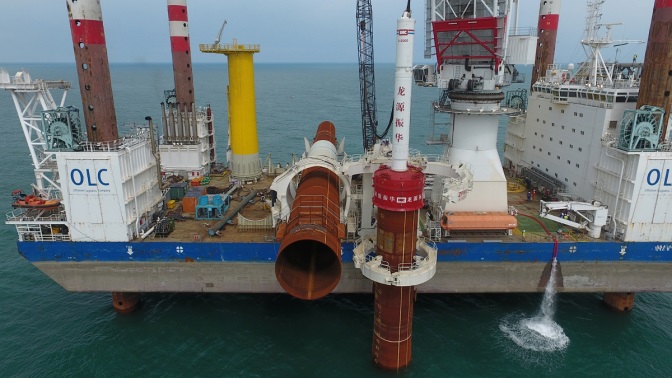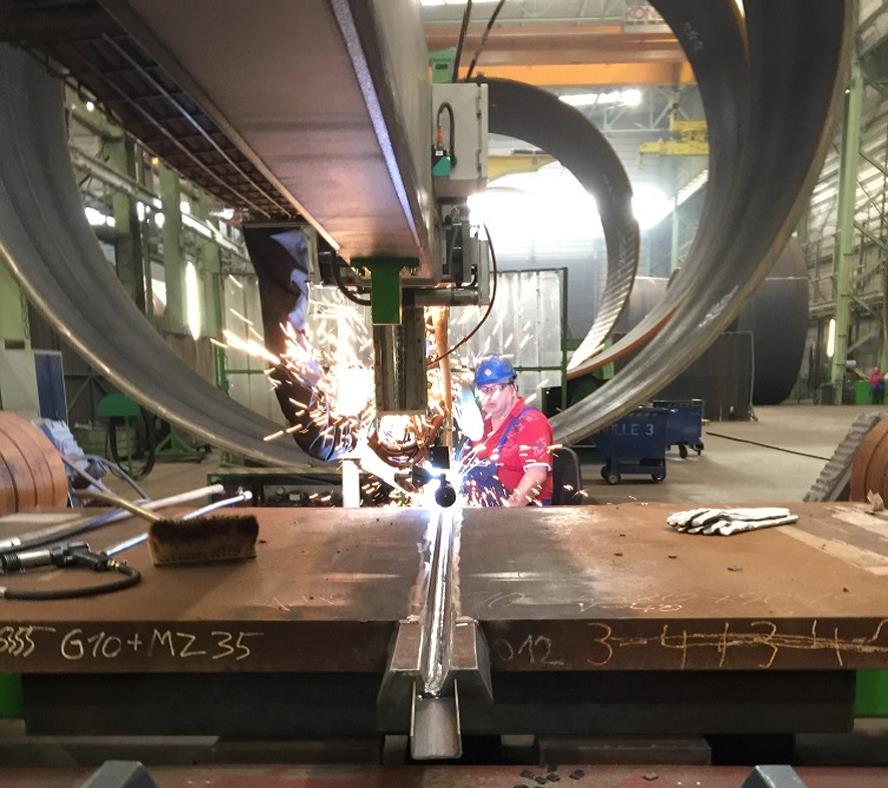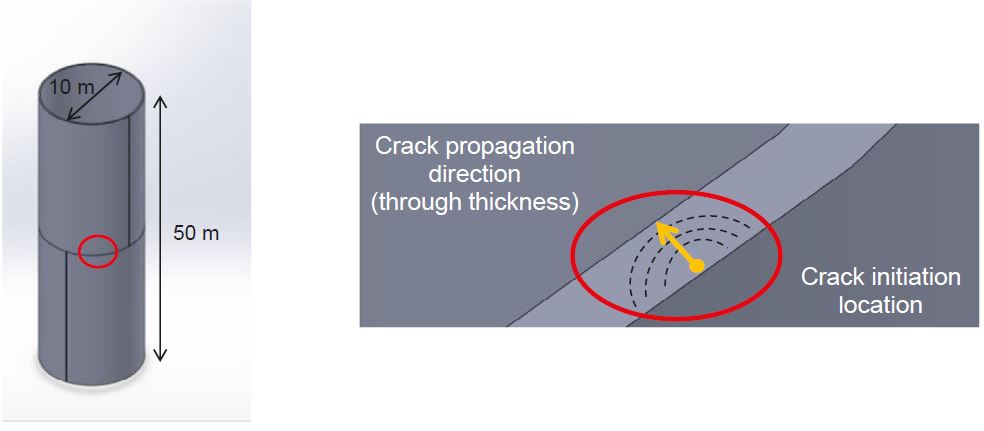If you're lucky enough to have visited the British coast this summer you may have noticed a prominent feature on the horizon – an offshore wind farm. Back in 2010 offshore wind farms were something of a rarity, supplying just 3% of Britain's electricity needs. But this figure is on the rise, and by 2030 we anticipate up to a third of the UK's electricity will be provided by offshore wind power.
Our growing need for offshore wind power presents many challenges to the energy industry, not least because of their colossal size. “Without resilient foundations to support offshore wind turbines, it would be impossible to build these immense structures which can tower hundreds of feet above the sea. In addition to supporting the wind turbine the foundations must cope with high stresses during installation and a harsh offshore environment during operation" explains Dr Ali Mehmanparast, Senior Lecturer in Structural Integrity from Cranfield University.
Hence, the assessment of the structural integrity of wind turbine foundations is one of the most important issues facing the energy industry today. With this motivation in mind, a group of researchers from the UK and Norway visited ISIS Neutron and Muon Source to perform some advanced world leading experiments on the most popular type of offshore wind turbine foundation – the monopile.
Strong foundations
Wind turbine foundations must contend with a multitude of forces during installation and operation, from hammering loads, sea currents, wind, and waves. The most widespread type of wind turbine foundation, the monopile, is constructed by welding a series of steel “cans" together. Once assembled the full sized structure can span up to 10 m in diameter and 70 m in length. The monopiles are then hammered deep into the seabed, anchoring the wind turbine to the ground and supporting its structure.

| 
|
Left: The monopile, installation into the seabed. Monopile, is typically 50-70 m in length and 3-10 m in diameter. Right: Monopiles are made of thick hot-rolled structural steel plates subjected to cold-rolling and bending followed by welding in the longitudinal direction to form “cans". Image reproduced from: A. Jacob et al. Theoretical and Applied Fracture Mechanics 96 (2018) 418–427 DOI:10.1016/j.tafmec.2018.06.001
Examining the welds
Researchers from Cranfield University, the Open University and the Norwegian University of Science and Technology used ENGIN-X to better understand the influence of welding process on steel used in offshore renewable energy monopile structures. “We noticed a significant research gap in the reliable characterisation of the state of residual stress in monopile structures upon fabrication, after pile drilling, during service operation and indeed the effect of welding sequence on residual stresses in monopiles. In order to remove the uncertainty and conservatism in the structural design and integrity assessment of monopiles, welding residual stresses need to be reliably characterised at all stages leading to a reliable estimate of fatigue crack initiation and propagation in monopiles,“explains Dr Ali Mehmanparast, Senior Lecturer in Structural Integrity from Cranfield University.

|
Left: A schematic representation of a circumferential weld in an offshore wind turbine monopile. Right: Representation of the crack initiation and propagation within a circumferential weld of a monopile. Cracks are often first created in the circumferential weld region. Image reproduced from: A. Jacob et al. Theoretical and Applied Fracture Mechanics 96 (2018) 418–427 DOI:10.1016/j.tafmec.2018.06.001
The team conducted neutron diffraction measurements on a compact tension specimen extracted from the large structural welded mock-up, typical of the weldment used in offshore wind monopiles. The extracted compact tension sample, normally used for fracture and fatigue crack growth tests, showed notably significant remnant residual stresses that could impact fracture and fatigue test results. Researchers concluded that the residual stresses in small laboratory samples extracted from large-scale weldments should be carefully characterised and taken into account in structural integrity tests.
Dr Mehmanparast summarises the impact of their findings “the levels of welding residual stress we observed in the mock-up, if not reliably treated or accounted for in structural integrity assessments, could inevitably lead to an accelerated fatigue crack initiation and propagation and unexpected catastrophic failure of monopile structures. We hope our findings will help to improve the design of future offshore wind monopile structures ".
With the use, and size, of offshore wind turbines on the up research into these impressive structures shows no signs of slowing. As a non-destructive and penetrating probe its likely neutrons will be used again to help tackle the challenges associated these remarkable feats of engineering.
Further information
Read the full research publication here: A Jacob et al. “Residual stress measurements in offshore wind monopile weldments using neutron diffraction technique and contour method" Theoretical and Applied Fracture Mechanics, 96 (2018), p.418-427 DOI:10.1016/j.tafmec.2018.06.001
Browse all our science highlights here.
Find further information on our instrument ENGIN-X can be found on the webpage.
Further information on the UK's wind power capacity can be found here and here.
